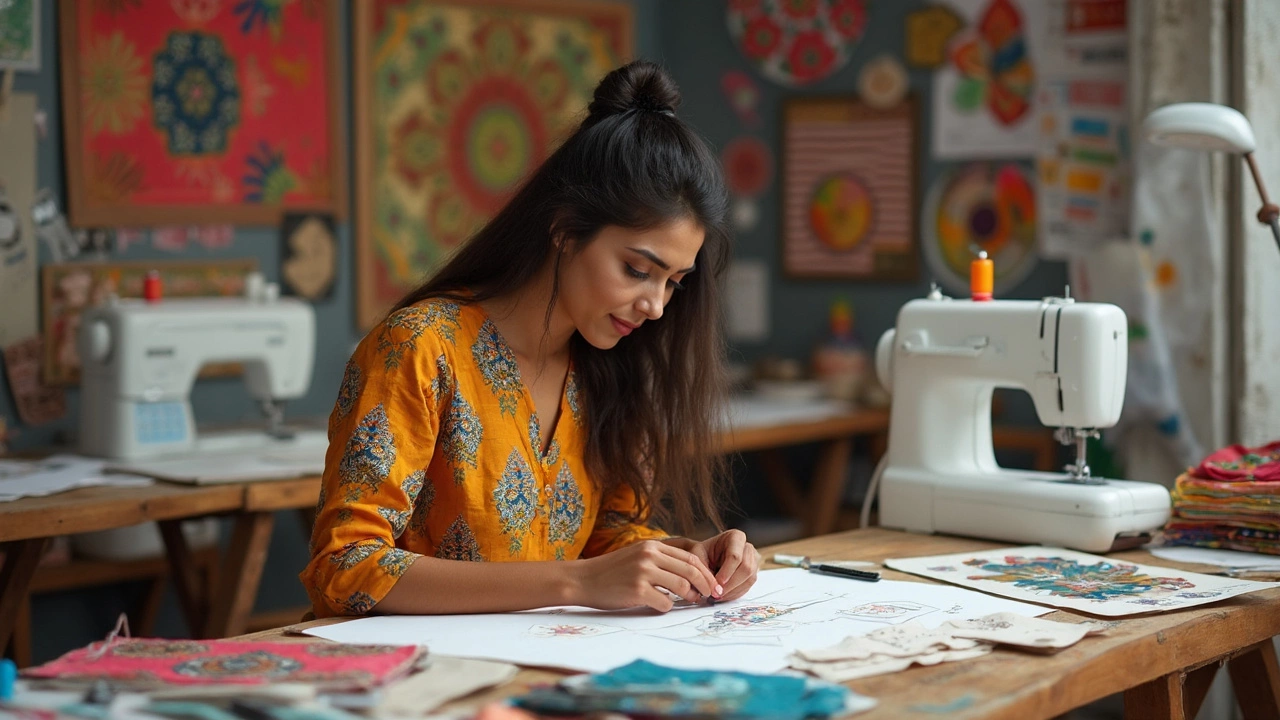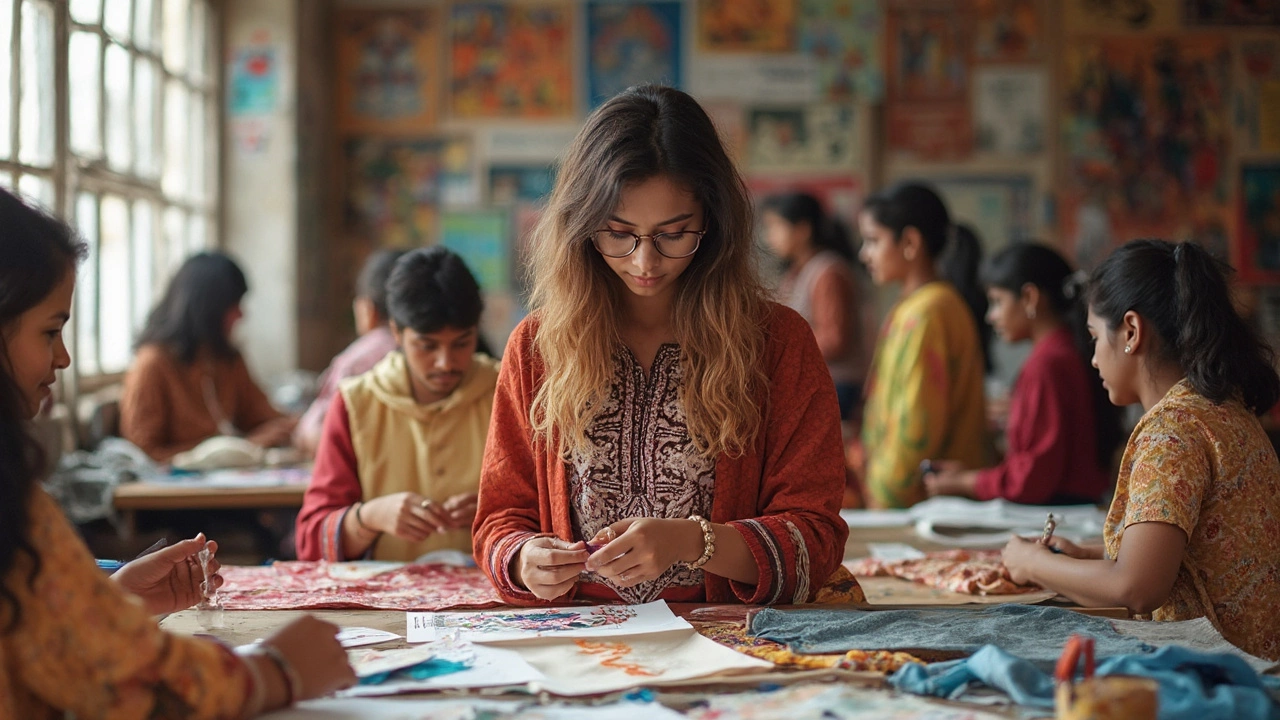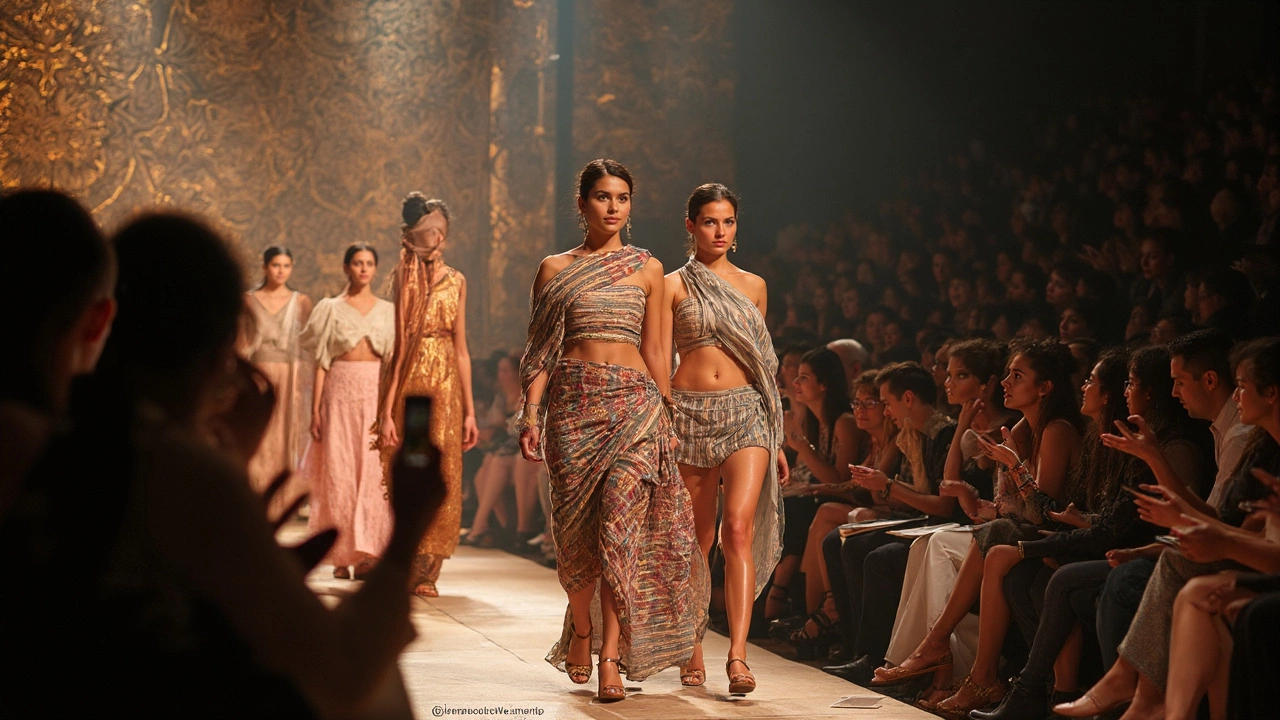
If you're dreaming about breaking into the fashion world, books and cool designs aren't your only companions. It's all about knowing which subjects will guide you toward the runway of your dreams. So, what do you need to study? Let’s say a blend of creative flair and technical smarts is the secret sauce here.
First up, you've got to lock in your design basics. Things like sketching and drawing aren't just for art class—they’re your bread and butter in fashion. It's about bringing your ideas to life on paper before turning them into fabric.
Beyond art, you should dive into the technical side, like understanding textiles and garment construction. Knowing fabrics helps you make better choices and shapes your designs' final look and feel. Think about it: the right stitch can turn a simple piece into a masterpiece.
- The Creative Side of Fashion
- Technical Know-How
- Fashion and Business Insight
- Cultural and Historical Context
- Honing Your Skills: Practice Makes Perfect
The Creative Side of Fashion
When it comes to diving into the world of fashion design, creativity is your best friend. But it's not just about dreaming up wild and wonderful clothing concepts. You need to channel that creativity into something tangible.
Now, sketching might seem a bit old school with all the digital tools out there, but it's still crucial. Hand-drawing fashion designs helps you brainstorm and refine ideas. Plus, it lays the groundwork for more complex design software you'll use later.
"Fashion is about dreaming and making other people dream," said Donatella Versace. Sketching is where those dreams start to take form.
Once you’ve got the drawing down, color becomes your playground. Understanding color theory lets you mess around with shades, moods, and styles. Knowing how colors work together can make or break a design.
Textile knowledge is another key piece of the puzzle. Different materials behave in various ways, and picking the right fabric can amplify your design's look and comfort. Ever wondered why some clothes just feel right? It's usually a smart fabric choice.
Composition and styling round out your creative foundation. Learning how garments sit together, drape, and match is important for pulling everything together. Imagine each outfit as a story you’re writing, where each piece has a role.
Whether you’re just doodling for fun or aiming for haute couture, the creative side of fashion is where your unique voice shapes the trends.
Technical Know-How
Alright, let's talk about the nuts and bolts of fashion—what's under the hood, so to speak. To become a true fashion maestro, you need a solid grip on the technical know-how that keeps those jaw-dropping designs from just being ideas. So what does this actually mean?
First off, understanding textiles is crucial. The world of fabrics is practically its own universe. Cotton, silk, wool, synthetics—they all behave differently, and knowing their quirks can make or break a design. For instance, did you know cotton is breathable and shrinks unless pre-washed? A small fact but huge for decisions in garment construction.
Next up, pattern making is where the magic happens. Imagine it as the blueprint of your design. Learning the ins and outs of creating patterns means you can turn any dream into reality, with the perfect fit. It's kind of like a puzzle; getting all pieces to fit together seamlessly.
Then there's the art of sewing. No need to be afraid of needles! You'll need to master basic stitches and seams, but also the courage to handle a sewing machine like a pro. Familiarizing yourself with various stitches can transform a garment's look.
And let's not forget about computer-aided design (CAD). Fashion’s gone digital, and you’re going to be right there with it. Tools like Adobe Illustrator help you map out your designs with precision that pen and paper might miss. They let you experiment without cutting into any precious fabric.
For those who love numbers, here's a quick, cool stat: Over 85% of fashion designers use some form of CAD in their design process. That’s a big chunk taking the digital route!
If you were thinking it's just about drawing pretty clothes, well, there’s a bit more to it. But mastering these skills will make you, not just a good designer, but a great one ready to tackle the fashion design world head-on.

Fashion and Business Insight
The dream of becoming a fashion designer isn't just about stunning designs and creative flair. To really make it in the fashion industry, you've also got to have a solid grip on the business side of things. Yep, that's right—knowing your way around the business landscape can take you from just a good designer to a successful one.
Starting with market trends, understanding what's hot and what's not is crucial. You'll want to know what people are buying, where the fashion world's heading, and how your designs fit into the bigger picture. This kind of insight helps tailor your collections to meet customer demands and stay relevant.
Then there's the money talk. Managing your budget is essential whether you’re working on a small project or launching your own fashion line. This includes everything from sourcing materials to setting the right price for your creations. It's about striking a balance between cost and quality, ensuring you're not just creating extraordinary designs but also making a viable business.
Marketing is another biggie in fashion. Promoting your brand effectively can set you apart from thousands of other designers. It's about building your brand’s identity and figuring out how to communicate that to the world. Social media, fashion shows, and collaborations are great ways to get your name out there and build a loyal following.
If this sounds like a lot to juggle, it kind of is! But with the right business acumen, you'll be well on your way to making your mark in the fashion design world. Plus, there are tons of resources, courses, and even mentors out there who can help guide you through these crucial elements.
| Aspect | Importance |
|---|---|
| Market Trends | Helps predict consumer preferences |
| Budget Management | Keeps projects financially viable |
| Marketing | Builds brand recognition and loyalty |
Cultural and Historical Context
Understanding the cultural and historical background of fashion isn't just for history buffs. It's a vital part of becoming a savvy designer. Fashion isn’t created in a bubble; it reflects what's happening in society, whether it's art movements, political changes, or even economic shifts.
Take the roaring 1920s, for instance. Women's fashion saw a dramatic shift with the introduction of flapper dresses. This wasn’t just about style; it was a reflection of newfound freedom and a break from tradition. The same thing happened in the rebellious 1960s with the rise of the miniskirt, symbolizing a cultural revolution.
Today's fashion is no different. Designers pull from cultural influences and historical styles to stay relevant. Think about how vintage styles always make a comeback. Those trends from the '80s your parents rocked? They’re back, and understanding why those trends were popular can help you predict what's coming next.
For those serious about studying fashion design, you might find yourself exploring classes that examine these influences. Courses in art history and anthropology can provide insights into how different cultures express themselves through clothing and how these expressions change over time. This knowledge helps you to blend traditional elements with modern designs, making your work both innovative and rooted in a rich context.
| Era | Fashion Influence | Societal Change |
|---|---|---|
| 1920s | Flapper Dresses | Women's Liberation |
| 1960s | Miniskirts | Cultural Revolution |
| 1980s | Bold Prints | Economic Growth |
Remember, diving into the cultural and historical context of fashion gives your designs a layer of depth and meaning that can resonate with people on a different level. It's not just about what people wear; it's about why they wear it.

Honing Your Skills: Practice Makes Perfect
You've probably heard it a million times, but it's true—practice really does make perfect, especially when it comes to anything in the world of fashion design. Doodling once in a while won’t cut it if you seriously want to carve a niche for yourself. You need to be consistent and dedicated to turning those creative sparks into real-life designs.
First, create a habit of sketching daily. It's like your personalized workout session, but for your creative muscles. Try sketching different styles, from casual to avant-garde, and don't shy away from experimenting with colors and patterns.
Get acquainted with sewing as it's an essential part of bringing your designs to life. Invest in a good sewing machine or seek out workshops that teach garment construction. While it might seem tough at first, every stitch brings you closer to mastering the craft.
Consider participating in fashion shows or competitions. They’re fantastic for gaining real-world experience and for networking within the fashion industry. These events often serve as launchpads for aspiring designers, offering a stage to showcase your talent and receive feedback from industry experts.
Last but not least, update yourself with the latest trends in fashion. Social media, fashion blogs, and attending industry events are great places to see what’s new. Adapt these influences into your practice, balancing what's trending with your unique style.
Remember, fashion design is not just about dreaming big but also putting in the hard work to polish your skills continuously. The more you practice, the more confident you'll become in seeing your creative vision become a tangible reality.
